Chapter 40
Other Notable Buildings and Houses
Besides the MacArthur Memorial and several old downtown churches that are still used by their original congregations, Norfolk has three other outstanding old public buildings and six architecturally distinctive early houses.
When "Norfolk Highlights" was first published in 1972, the oldest public building was Old Christ Church at Cumberland and Freemason streets. Once the most fashionable house of worship in Norfolk, it has since been torn down. It was consecrated on November 9, 1828, and replaced the first Christ Church on Church Street, built in 1800 and burned in 1827. Its architect was Thomas Williamson (1776-1846), the cashier of the Virginia Bank in Norfolk and an amateur architect.
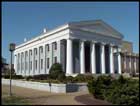
Next in point of age is the Old Norfolk Academy on Bank Street. It was modeled by its architect, Thomas Ustic Walter (1804-1887) of Philadelphia, on the Theseum in Athens. Its cornerstone was laid on May 25, 1840, and it was opened in 1841. During the 1855 yellow fever epidemic it was used temporarily as Norfolk's Post Office.
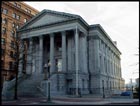
The Norfolk Customs House is the city's third outstanding old public building. Designed by Ammi B. Young (1798-1874), a government architect, the dignified Blue Hill granite building with an elevated pedimented Roman Corinthian portico was begun in 1852 and completed in 1859.
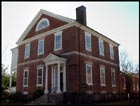
The Taylor-Whittle House at Freemason and Duke streets, the first of the six architecturally distinctive old houses, not only is one of Norfolk's oldest houses but also is considered one of the finest examples of Federal architecture in the country. It stands on confiscated Tory property that was later granted in 1788 to George Purdie, who had also been accused unjustly during the Revolution of having Tory sympathies. Tradition says the man who built the house, presumably Purdie, never lived in it. In any event, it was occupied by John Cowper, a Norfolk merchant and mayor of Norfolk in 1801, when he deeded it on December 15, 1802, to Richard Taylor (1771-1827), the ancestor of its later occupants.
The Boush-Tazewell House, dating from the 1780s, that formerly stood on the site of the Colonial Theater in downtown Norfolk but was moved during the early Twentieth Century to Edgewater, is also one of Norfolk's historic homes. Its most notable occupant was Littleton Waller Tazewell (1774-1860), a former United States senator and governor of Virginia. (See also C. W. "Bill" Tazewell's History of the Boush-Tazewell-Waller House.)

The Myers House at Freemason and Bank streets, built in 1792 on property acquired in September 1791 by Moses Myes, one of Norfolk's early merchant princes, is also an outstanding example of Federal architecture. The addition containing the octagonal end dining room, considered one of the finest rooms of its period in the country, was added about ten years after the original house was built. Many notables, including Lafayette, James Monroe, Stephen Decatur, and President Theodore Roosevelt, have been entertained there.
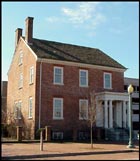
The nearby Willoughby-Baylor House, dating from the closing years of the Eighteenth Century, was built on the site of Norfolk's pre-Revolutionary "Mason's Hall." It was originally owned by Captain William Willoughby and later was occupied by several generations of the Baylor family.
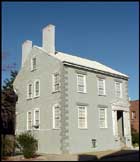
The Allmand-Archer House on Duke Street was built in the 1790s by Matthew Heary, who sold it in 1802 to Harrison Allmand, a Norfolk merchant who was known as "Old Gold Dust" because of his great wealth. It was used as headquarters for American officers during the War of 1812.
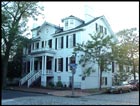
The Selden House at Freemason and Botetourt streets was built in 1807 by Dr. William Boswell Selden as a country house when that part of Freemason Street was known as Grafton Street. Selden's son, Dr. William Selden, entertained General Robert E. Lee there in 1870.
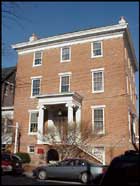
The Lamb House on West Bute Street, originally known as "Kenmure" from a family estate in Scotland, dates from 1845. Its builder, William Wilson Lamb, was mayor of Norfolk in 1862 when the city was recaptured by the Federal forces. Norfolk's historic Mace was hidden by lamb under one of the hearths of the house during the Civil War.
Chapter
41
Early Norfolk Baptist Highlights
Norfolk Highlights 1584 - 1881
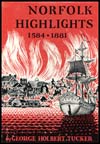
See the "Table of Contents" for links to every chapter in Norfolk Highlights 1584 - 1881 by George Holbert Tucker.
